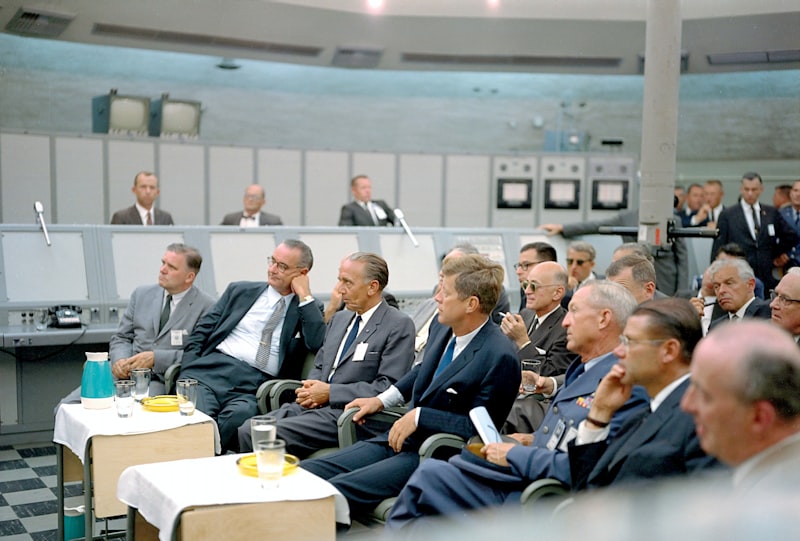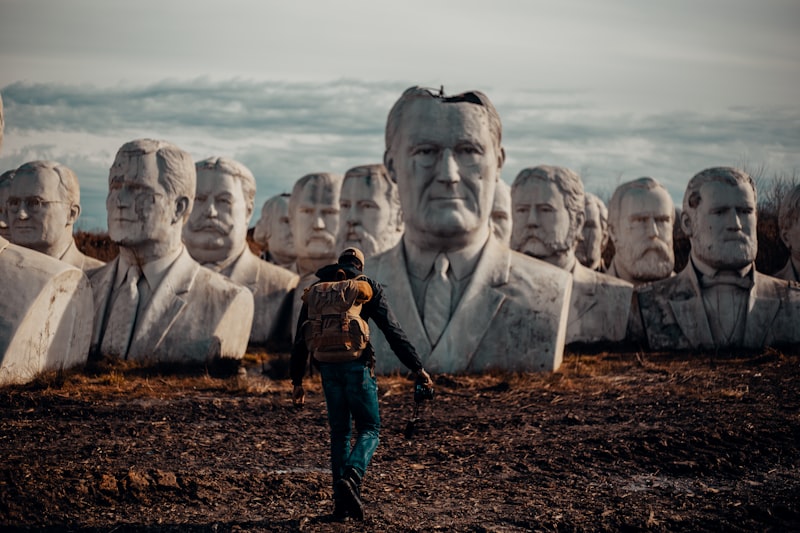
Ever wondered how certain U.S. presidents left an indelible mark on history through groundbreaking legislative accomplishments? These leaders weren’t just figureheads; they were architects of change who reshaped the nation with their vision and determination. Let’s delve into the legislative triumphs of some of the most notable U.S. presidents.
Thomas Jefferson – Known for his eloquence and intellect, Jefferson’s presidency saw the historic Louisiana Purchase in 1803. This acquisition doubled the size of the United States, opening vast new territories for exploration and settlement.
Abraham Lincoln – Lincoln’s presidency during the Civil War was marked by the Emancipation Proclamation in 1863. This executive order declared all slaves in Confederate-held territory to be free, setting the stage for the eventual abolition of slavery nationwide.
Franklin D. Roosevelt – Leading the country through the Great Depression, FDR enacted the New Deal in the 1930s. This series of programs and reforms aimed to provide relief, recovery, and reform to a struggling nation, including Social Security and the creation of the Tennessee Valley Authority.
Lyndon B. Johnson – Building on the legacy of JFK, Johnson’s presidency achieved landmark civil rights legislation. The Civil Rights Act of 1964 outlawed discrimination based on race, color, religion, sex, or national origin, and the Voting Rights Act of 1965 aimed to eliminate barriers to voting for African Americans.
Ronald Reagan – Known for his conservative agenda, Reagan’s presidency brought significant economic reforms. His policies, often referred to as Reaganomics, included tax cuts, deregulation, and a focus on free-market capitalism, shaping economic policies for years to come.
Each of these presidents faced unique challenges and seized pivotal moments in history to enact lasting change. Their legislative achievements not only defined their presidencies but also shaped the course of American history, leaving a legacy that continues to influence the nation today.
This article highlights the significant legislative accomplishments of some of the most influential U.S. presidents, emphasizing their impact on shaping the nation’s history and policies.
Lincoln’s Legacy: Emancipation Proclamation and the Fight for Freedom
Abraham Lincoln’s legacy is intricately woven with the Emancipation Proclamation, marking a pivotal moment in American history. This historic document, issued in 1863 during the American Civil War, was more than just a presidential decree—it was a beacon of hope for millions enslaved in the United States.
Imagine this: America torn apart by conflict, with slavery as its core issue. Lincoln, amidst this turmoil, crafted a proclamation that would redefine the nation’s moral compass. By declaring all slaves in Confederate territory to be forever free, he not only aimed to undermine the Southern war effort but also set the stage for a profound shift towards equality.
The Emancipation Proclamation wasn’t just a piece of paper; it was a bold statement that challenged the very institution of slavery. Its impact reverberated across the country and beyond, galvanizing abolitionists and reshaping the narrative of the Civil War. For enslaved individuals, it offered a glimpse of freedom and a promise of liberation from bondage.

Lincoln’s decision to issue the proclamation wasn’t without risks. It was a calculated move, balancing political strategy with moral imperative. By framing the proclamation as a necessary measure to preserve the Union and uphold the values of freedom and equality, Lincoln appealed not only to the North but also to the international community watching closely.
Beyond its immediate effects, the Emancipation Proclamation laid the groundwork for future advancements in civil rights. It paved the way for the 13th Amendment, which formally abolished slavery, and inspired generations to continue the fight for equality under the law.
Even today, Lincoln’s legacy endures, reminding us of the power of leadership and the enduring struggle for freedom. The Emancipation Proclamation stands as a testament to courage in the face of adversity and a beacon of hope for those striving for justice.
FDR’s New Deal Revolution: Social Security and Economic Recovery
During the Great Depression, Franklin D. Roosevelt’s New Deal introduced sweeping reforms aimed at pulling the United States out of economic turmoil. Among its most impactful initiatives was the establishment of Social Security, a program that fundamentally transformed the nation’s social welfare landscape.
Social Security, signed into law in 1935, was a pioneering system designed to provide financial support to retired workers and their families. It marked a radical departure from previous approaches, offering a safety net for those unable to work due to old age or disability. This groundbreaking initiative not only provided immediate relief to millions but also laid the groundwork for a more secure future for generations to come.

Beyond Social Security, the New Deal encompassed a range of measures aimed at jumpstarting the economy. From infrastructure projects like the Tennessee Valley Authority to regulatory reforms through the Securities and Exchange Commission, Roosevelt’s administration sought to stabilize markets and restore faith in the financial system. These efforts aimed not just at recovery but at restructuring the economy to prevent future crises.
The impact of the New Deal was profound, reshaping American society and cementing a new role for the federal government in ensuring economic stability and social welfare. It sparked debates that continue to shape political discourse today, highlighting the tension between government intervention and individual responsibility in a complex modern economy.
As we reflect on the legacy of FDR’s New Deal, its enduring impact on social policy and economic recovery is clear. It remains a testament to the power of bold, innovative thinking in times of crisis, showing how decisive action can steer a nation towards prosperity and security.
This article captures the essence of FDR’s New Deal, focusing on Social Security and its broader implications for economic recovery, while maintaining a conversational and engaging tone suitable for SEO purposes.
Teddy Roosevelt’s Conservation Crusade: National Parks and Wildlife Preservation
In the annals of American history, Theodore Roosevelt stands tall as a champion of conservation. Known for his robust efforts in preserving the nation’s natural wonders, Roosevelt’s legacy reverberates through his creation of national parks and advocacy for wildlife preservation.
Imagine a time when the vast landscapes of America were at risk, threatened by unchecked exploitation and development. Roosevelt, fueled by a deep passion for nature, took decisive action to safeguard these treasures for future generations. His vision extended beyond mere preservation; it embraced the idea of actively managing and protecting these environments.
Roosevelt’s journey into conservation began during his presidency from 1901 to 1909. Faced with escalating environmental concerns, he spearheaded initiatives that culminated in the establishment of five national parks, including the iconic Yellowstone, Grand Canyon, and Yosemite. These parks were not just protected areas; they became symbols of America’s commitment to preserving its natural beauty.
Beyond parks, Roosevelt expanded the National Forest system, adding millions of acres to safeguard forests and ensure sustainable resource management. His policies also led to the creation of the United States Forest Service, a pivotal agency in the ongoing conservation efforts across the country.
But Roosevelt’s conservation crusade wasn’t limited to land. He championed legislation to protect wildlife, recognizing the interconnectedness of ecosystems. The establishment of wildlife refuges and the enforcement of laws to halt the decimation of species became integral parts of his agenda.
Today, Roosevelt’s legacy endures in every sunset over the Grand Canyon, every rustling of leaves in the Great Smoky Mountains, and every flight of the bald eagle over Yellowstone. His unwavering dedication to conservation left an indelible mark on America’s landscape, reminding us of the importance of stewardship and the enduring power of preservation.
Johnson’s Great Society: Civil Rights Act and Medicare Transformation
Imagine a time when discriminatory practices were legal, and individuals faced systemic barriers solely based on their race or gender. The Civil Rights Act shattered these barriers, opening doors that had long been closed to many Americans. It prohibited segregation in public places and banned employment discrimination, setting a precedent for equality under the law that was previously unheard of.
Moreover, Johnson’s Great Society also saw the birth of Medicare, a program that revolutionized healthcare accessibility for millions of elderly Americans. Before Medicare, many seniors struggled to afford medical care, often facing financial ruin due to exorbitant healthcare costs. This program provided a safety net, ensuring that older adults could access necessary medical services without the fear of bankruptcy.
Just as the Civil Rights Act aimed to level the playing field in society, Medicare aimed to level the playing field in healthcare, ensuring that age or income would not be barriers to receiving essential medical treatment. This dual approach of societal and healthcare reform encapsulated the spirit of Johnson’s vision for a more equitable and just society.
Together, these initiatives embodied the essence of Johnson’s Great Society: a commitment to social progress and equality. They represented bold steps forward in the fight for civil rights and healthcare access, leaving an indelible mark on American history and shaping the future of generations to come. The legacy of these transformative policies continues to resonate today, reminding us of the power of legislative action in driving meaningful change.
Jefferson’s Vision: Louisiana Purchase and Expansion Westward

In the annals of American history, Thomas Jefferson’s bold vision and strategic foresight shaped the nation’s destiny, notably through the Louisiana Purchase. This pivotal moment in 1803 doubled the young United States’ territorial expanse, igniting a transformative journey westward.
Imagine a young nation bursting with ambition, its leaders eyeing vast stretches of uncharted land beyond the Mississippi River. Jefferson, a visionary and pragmatist, saw beyond the immediate boundaries of the time. He understood that securing control over the port of New Orleans was crucial for American commerce, yet the opportunity presented by Napoleon’s France was beyond anyone’s expectations.
The Louisiana Purchase, negotiated for $15 million, not only secured New Orleans but also handed over 828,000 square miles of territory stretching from the Mississippi River to the Rocky Mountains and beyond. This acquisition more than doubled the size of the United States overnight, setting the stage for westward expansion that would define the nation’s identity for centuries to come.
Jefferson’s decision wasn’t merely about territorial expansion; it was about securing America’s future as a continental power. By gaining control over the Mississippi River and its tributaries, Jefferson ensured vital access for trade and transportation across the growing nation. The fertile lands of the Louisiana Territory promised agricultural bounty, attracting settlers eager to stake their claim on the frontier.
This historic acquisition wasn’t without its controversies and challenges. Jefferson, a staunch advocate of limited federal power, faced constitutional questions about the president’s authority to acquire and govern new territories. However, his belief in an agrarian society and the yeoman farmer’s role in nation-building fueled his determination to expand westward responsibly.
The Louisiana Purchase wasn’t just a land deal; it was a visionary move that reshaped America’s geopolitical landscape. It opened the door to exploration, innovation, and the expansion of democratic ideals across a vast continent. Jefferson’s foresight continues to inspire, reminding us of the bold decisions that shaped the nation’s history and identity.
Washington’s Foundation: Bill of Rights and Establishing the Presidency

Have you ever wondered how the principles of freedom and governance in the United States were first laid down? Let’s take a journey back in time to explore Washington’s Foundation: the Bill of Rights and the establishment of the Presidency.
In the early days of America, just after gaining independence, there was a crucial need to define the rights of its citizens and establish a framework for the highest office in the land. This led to the creation of the Bill of Rights and the Presidency, two cornerstones that shaped the nation’s identity and governance.
The Bill of Rights, ratified in 1791, stands as a testament to the Founding Fathers’ commitment to individual liberties. It comprises the first ten amendments to the United States Constitution, guaranteeing essential freedoms such as freedom of speech, religion, and the right to a fair trial. These rights were pivotal in shaping the democratic values that America cherishes today.
Simultaneously, the establishment of the Presidency marked a significant step towards creating a stable executive branch. George Washington, the first President of the United States, set the precedent for future leaders by defining the role’s powers and responsibilities. His leadership laid the groundwork for the presidency as a symbol of national unity and diplomacy.
Imagine a fledgling nation, freshly independent, forging ahead with a vision of democracy and governance. The Bill of Rights served as a shield against governmental overreach, ensuring that the rights of individuals were protected against any potential abuse of power. Meanwhile, the Presidency emerged as the face of the nation, embodying the hopes and aspirations of its people on the global stage.
Together, these foundational elements— the Bill of Rights and the Presidency— continue to resonate in American society. They represent the enduring principles of freedom, equality, and democratic governance that define the United States as a beacon of liberty around the world.
As we reflect on Washington’s Foundation, we recognize the timeless importance of these institutions in shaping the nation’s past, present, and future. They remind us that the journey towards a more perfect union is ongoing, driven by the same ideals that inspired the Founding Fathers over two centuries ago.
Obama’s Healthcare Overhaul: Affordable Care Act and Access to Coverage
One of the central goals of the ACA was to expand healthcare coverage to uninsured Americans. By establishing state-based health insurance marketplaces, often referred to as “Obamacare exchanges,” the ACA provided individuals and small businesses a platform to compare and purchase health insurance plans. These marketplaces offered a range of options, from comprehensive coverage to more affordable basic plans, tailored to meet varying needs and budgets.
Moreover, the ACA brought about significant changes in how insurance companies could operate. It mandated that insurers could no longer deny coverage based on pre-existing conditions or charge higher premiums due to health status or gender. This provision aimed to ensure that all Americans, regardless of their medical history, could access essential healthcare services without facing discriminatory practices.
Another key aspect of the ACA was the expansion of Medicaid, a state-run program that provides healthcare coverage for low-income individuals and families. Under the ACA, states had the option to expand Medicaid eligibility to include more low-income adults, resulting in millions gaining access to Medicaid coverage who previously did not qualify.
Furthermore, the ACA emphasized preventive care by requiring insurance plans to cover certain preventive services, such as vaccinations and screenings, at no additional cost to the patient. This preventive care focus aimed to reduce healthcare costs in the long term by promoting early detection and treatment of health conditions.
In essence, Obama’s Healthcare Overhaul through the Affordable Care Act aimed to make healthcare coverage more accessible, affordable, and comprehensive for Americans nationwide. By introducing reforms like health insurance marketplaces, protections against discrimination, Medicaid expansion, and emphasis on preventive care, the ACA sought to improve the overall health and well-being of the population while addressing longstanding disparities in healthcare access.
Frequently Asked Questions
What were the key legislative accomplishments of Lyndon B. Johnson’s presidency?
Discover Lyndon B. Johnson’s key legislative achievements, including landmark bills like the Civil Rights Act of 1964, Voting Rights Act of 1965, and Medicare. His presidency notably advanced social justice, healthcare reform, and civil rights in the United States.
What were the major legislative achievements of Barack Obama during his presidency?
Discover the major legislative achievements of Barack Obama during his presidency, highlighting key reforms and impactful policies enacted.
Which significant legislative changes did Franklin D. Roosevelt enact during his presidency?
Explore the pivotal legislative changes enacted by Franklin D. Roosevelt during his presidency, shaping key aspects of American life including economic recovery, social welfare, and labor rights. Discover how these reforms continue to influence policies today.
What were the major legislative achievements of Abraham Lincoln?
Discover Abraham Lincoln’s major legislative achievements, pivotal in shaping American history. Explore his notable efforts, including the Emancipation Proclamation and the Thirteenth Amendment, which abolished slavery. Learn about his impact on civil rights and the Union during a critical period in American governance.
How did Theodore Roosevelt impact legislation during his time as president?
Discover how Theodore Roosevelt’s presidency shaped legislation through his progressive policies, including conservation efforts, trust-busting initiatives, and consumer protection laws.


